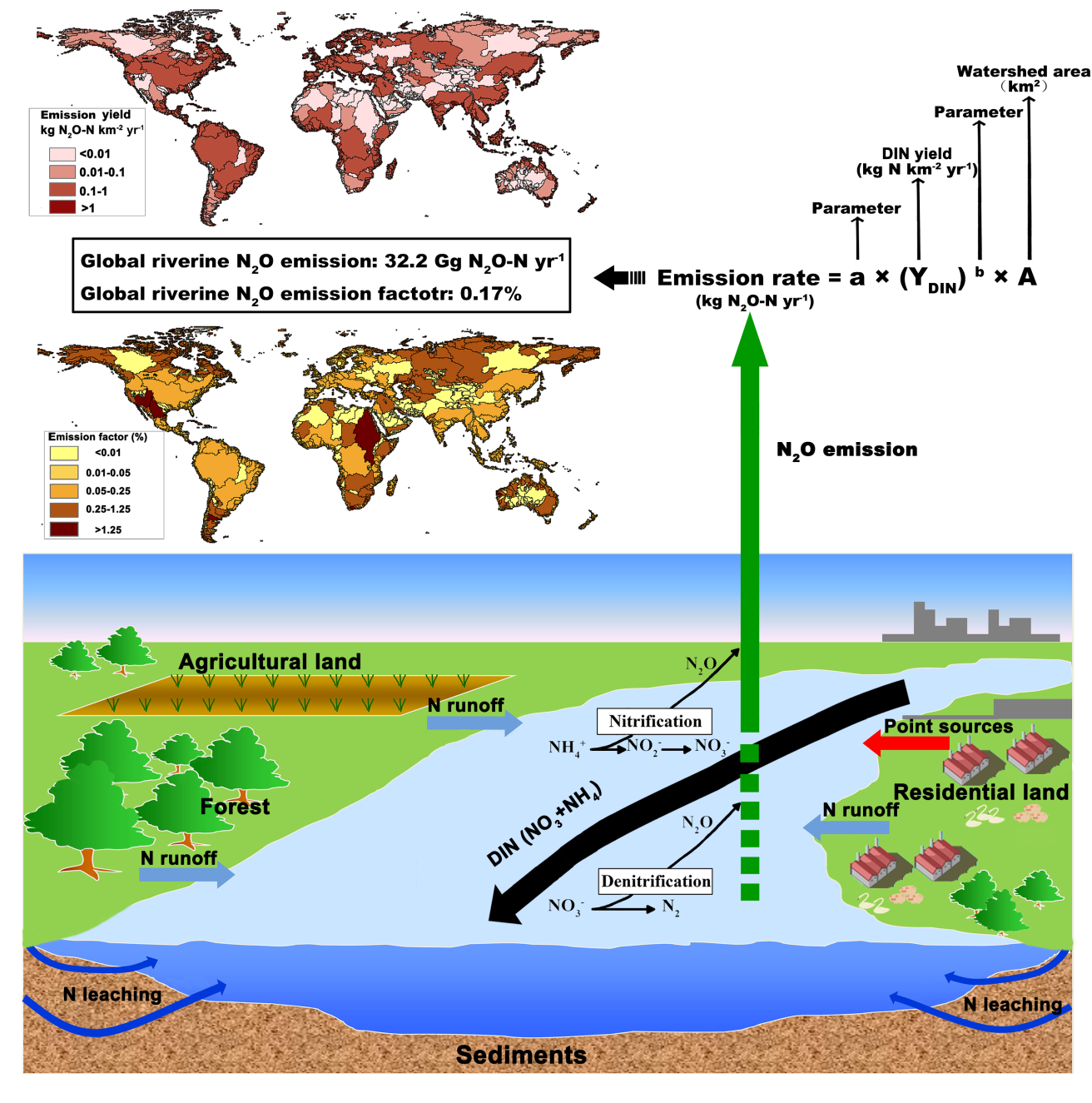Prof. Chen Dingjiang Makes an Introduction of the Law of N2O Release from Rivers across the World on the Journal - Global Change Biology
2018-10-09
On May 12, 2016, the latest achievement of "Modeling nitrous oxide (N2O) emission from rivers: A global assessment" of the research group of Associate Professor Chen Dingjiang, College of Environmental & Resource Sciences of Zhejiang University was published on the journal of Global Change Biology (IF=8.044). For the thesis, Associate Professor Chen Dingjiang is the corresponding author, and his doctoral student Hu Minpeng is the first author. Both of them work in Zhejiang University. The research is sponsored by such funds as National Natural Science Foundation of China, Fundamental Research Funds for the Central Universities, funds from the construction of peak disciplines and funds from foreign first-class cooperation programs and so on.
Nitrous oxide (N2O) is an important greenhouse gas. Due to the sharp increase of anthropogenic active nitrogen, the pollution load of nitrogen in rivers is rising, which has strengthened the N2O release from rivers. Currently, the N2O release from global or regional rivers, is directly obtained by the N2O releasing factor from rivers multiplied by the load of nitrogen loss. However, the N2O releasing factor of rivers across the world, published by IPCC and according to some researches, is mainly based on limited observations, thereby resulting in a difference in the order of magnitude among the values of releasing factor (0.25%-2.5%) from different sources. The resulting N2O release from rivers across the world (300-2100 Gg N2O-N yr-1) is also highly uncertain. Therefore, clearing the law of N2O release from rivers across the world and identifying some reliable estimation methods serve as the key scientific issues to be solved in the field of global or regional N2O release.
The research group of Associate Professor Chen Dingjiang has summarized the results of N2O release in 169 rivers, which have been published by domestic and foreign literatures. Based on the data on the loss flux simulation of dissolved inorganic nitrogen (DIN) targeted at 6,400 rivers worldwide by means of the NEWS2-DIN-S model, the group has illustrated the main factors affecting the N2O release from rivers in different climatic zones and various types of watershed. Based on these efforts, the group has set up the nonlinear response model of the release of the N2O release from rivers between the DIN loss flux), and clarified the law of spatial distribution of N2O release from rivers across the world and releasing factor (Figure 1). The results show that: the N2O release flux from rivers mainly depends on the level of nitrogen, while the releasing factor decreases as power function with the increase of flow or nitrogen concentration/load; the effect of temperature on the N2O release from rivers is not notable. The average total N2O release from rivers across the world is 32.2 Gg N2O-N yr-1, and the mean value of the releasing factor is 0.17%, both significantly lower than the existing estimates. The previous research has the following setbacks: (1) the effects of temperature and runoff on the nitrogen loss of nonpoint pollution are not taken into consideration, and the global DIN loss flux is overestimated; (2) the law of that the releasing factor decreases as power function with the increase of flow or nitrogen concentration/load is ignored; (3) the difference in the values of releasing factor corresponding to different forms of nitrogen is neglected, which may greatly overestimate the N2O release from rivers. The above-mentioned research results have advanced the quantitative understanding of N2O release from rivers across the world, and provided a new tool for estimating the large-scale N2O release from rivers.
Link: http://onlinelibrary.wiley.com/doi/10.1111/gcb.13351/pdf

